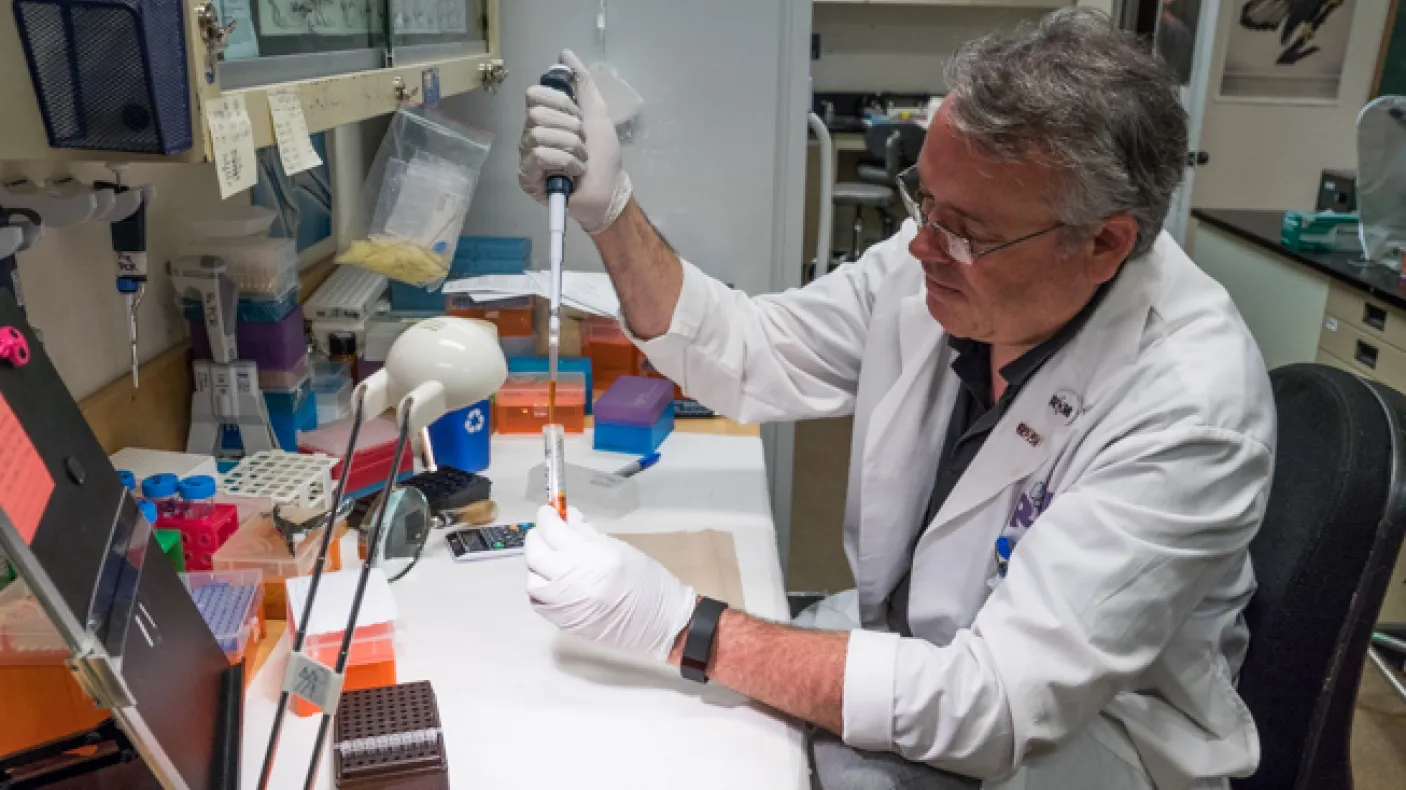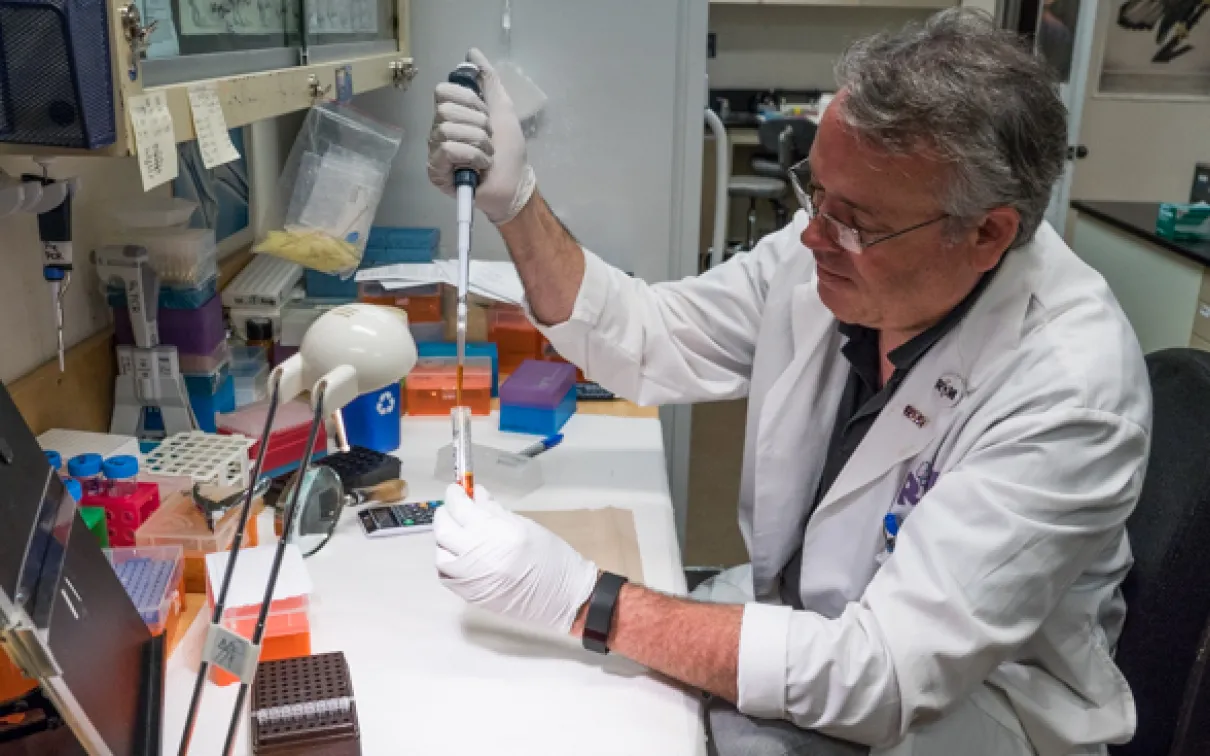True Blue Detectives
Published
Categories
Author
Blog Post
Guest blog written by 2017 Environmental Visual Communication student Connor McDowell
The Royal Ontario Museum has marked yet another first for science with its Blue Whale project. This achievement could hold keys to the conservation of this majestic, endangered mammal – not to mention a deeper understanding of the unique evolutionary history of the largest living animal on Earth. The beginning of this story starts two thousand kilometres away, on the shores of Newfoundland, Canada with something so small that you can't see it with the naked eye.
Washed upon the shores of the towns of Trout River and Rocky Harbour, two blue whales attracted a great deal of attention from around the world. The ROM got the opportunity to turn this tragic event into a scientific learning opportunity; quick to spring into action to preserve samples, it is clear that luck was on their side. Upon arrival, the team discovered that one of the fins of the blue whale was still submerged in water. The cold waters of the Atlantic had helped to preserve the DNA. As Oliver Haddrath, one of the ROM technicians working on the Blue Whale Project, would say, “the colder the better!” To collect genetic material, the team took multiple samples of tissues and a bone core from the rib. These were then preserved and sent back to the ROM until they could be further analyzed. But what exactly can be done with these DNA samples, and who has the capacity to do the work?
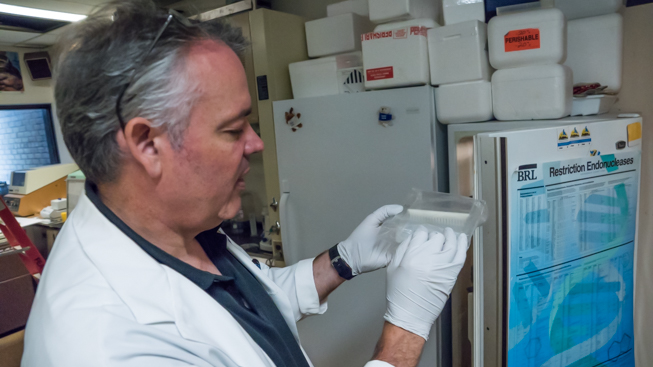
You probably wouldn’t have guessed that sample processing would be completed, in house, at the ROM. The museum has its own DNA lab that is just like one you would see on CSI, except without the over-the-top GCI (it’s still a pretty cool lab though). It is led by research technician Oliver Haddrath from the ROM's Ornithology Department. When not studying birds from the ornithology collection, Oliver and the genetics lab team work on running DNA sequences, extractions, amplifications and other research related to genetic materials gathered from specimens collected around the world. The ROM has become the first institution to fully sequence the genome of a blue whale. It is no small task to analyze data of this sort, with copious amounts of information contained within each tiny sample. To give you some perspective, if you were to type out all of the blue whale’s DNA data in 12 pt font, the pile of paper would be 100 metres tall. Even though Oliver has been working on this project for over two and a half years, he still is not finished. Have you ever worked on the same project for over two years?
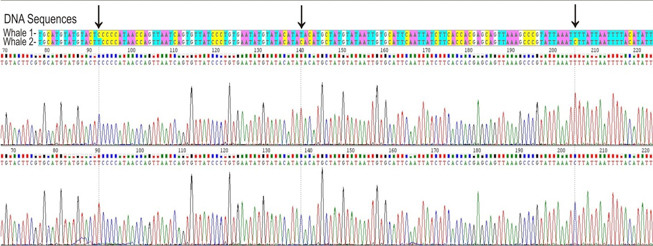
Let’s rewind to high school biology. Do you remember the four nucleotide bases of DNA- A, G, C, T? Well, DNA sequencing is a process that determines the order of these four bases, and helps us to be able to read the sequence – basically the patterns of the A, G, C, and Ts throughout the strand of DNA. There are two ways to put all of the sequence DNA together – “reference” and “de novo”. The reference method is a lot quicker, and compares the blue whale DNA to DNA from similar species that has already been sequenced. This is basically like putting a puzzle together using the reference photo on the box - however you are often missing a couple of pieces. With reference-based sequencing, the team has being able to analyze 91% of the Blue Whale DNA. The de novo method takes longer, because you are just looking at the Blue Whale DNA on its own, and have to put the puzzle together without the box image to go off of. However, with this method the Blue Whale Team can obtain 100 percent of the DNA, and they hope to complete this in the near future. Once this is completed, the ROM would also be the first institution to fully sequence the blue whale DNA.
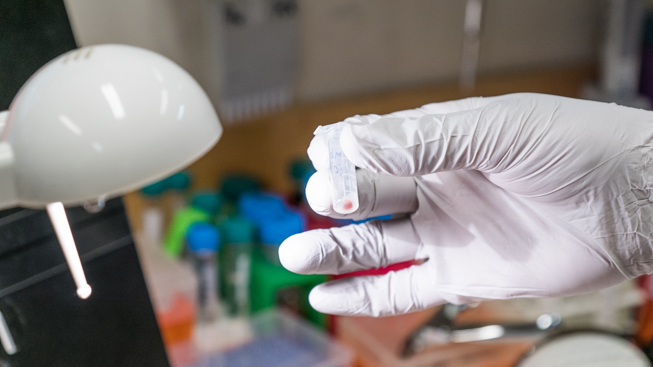
How can DNA help to solve some of the mysteries of the lives of blue whales? A great example involves the way that these animals feed. If the average krill is 2 cm long and about a gram in weight, the blue whale is 90,000 times heavier or 12,000 times as long. How do such large creatures find swarms of their tiny food in the large ocean expanse? Blue whale DNA shows us that their eyes have evolved over time to only have one visual pigment thereby restricting their vision to black and white. This helps them see the shadows of the krill more clearly against the light of the surface when coming from underneath them to feed. Other studies on the evolution of their vision related to feeding are hoping to find out if blue whale eyes are also particularly honed for seeing the light that krill give off with their bioluminescence.
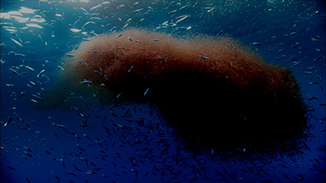
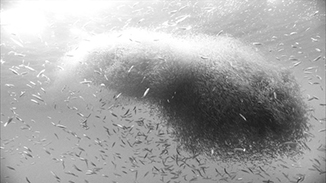
This isn't the only mystery that the ROM DNA lab is trying to solve. Their analyses have also provided an estimate that North Atlantic blue whale populations may have been as high as 300,000 whales before industrial whaling created a significant decline in population. Their population reached levels as low as 600-1000 in the 1960s.
Some additional questions the team is still working to answer through their research and studies include a broader scope related to whale evolution, including: How did their limbs disappear? How did baleen evolve?
The blue whale is one of the most iconic species of our oceans. Research on the blue whale's genome can provide critical insight into their past, and help us to learn more about their future as a species, as well as our own. They are resilient creatures, and have survived over 50 million years in our oceans, and with our conservation efforts, I hope they can survive for another 50 million years.
If you would like to learn more about blue whales visit the Out of the Depths: The Blue Whale Story exhibition at the ROM before is closes on September 4, 2017.
